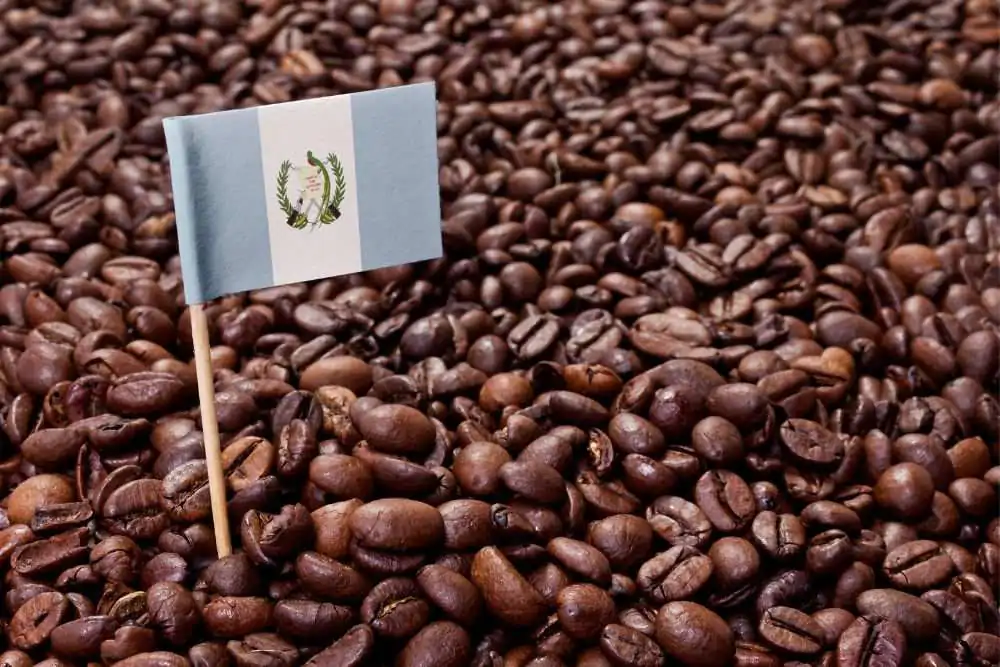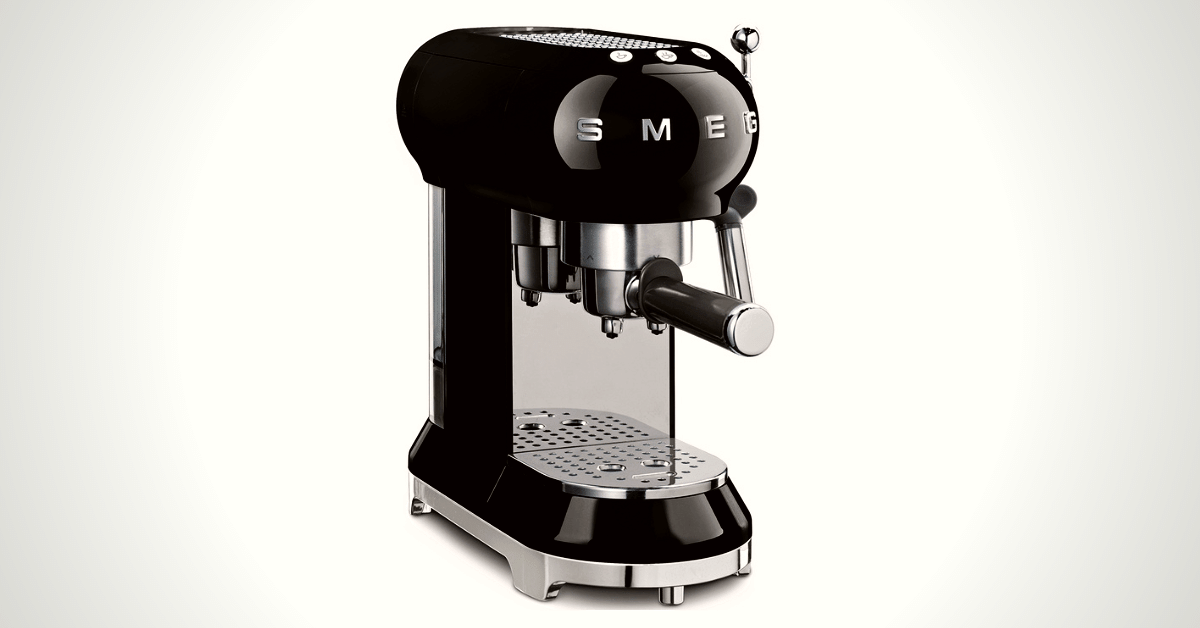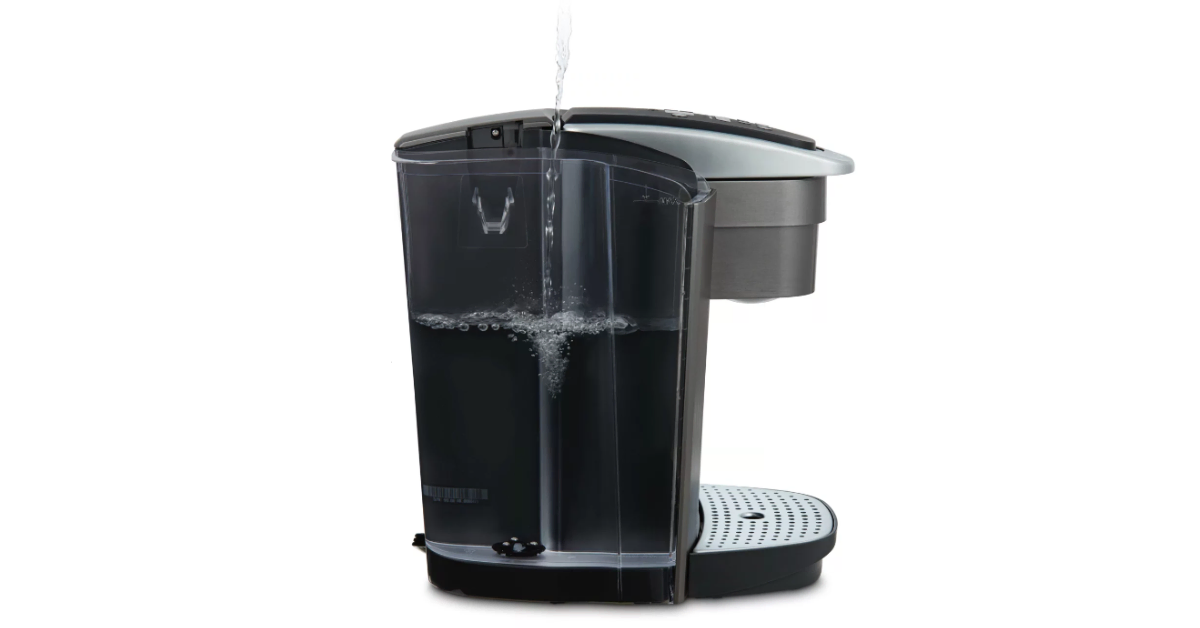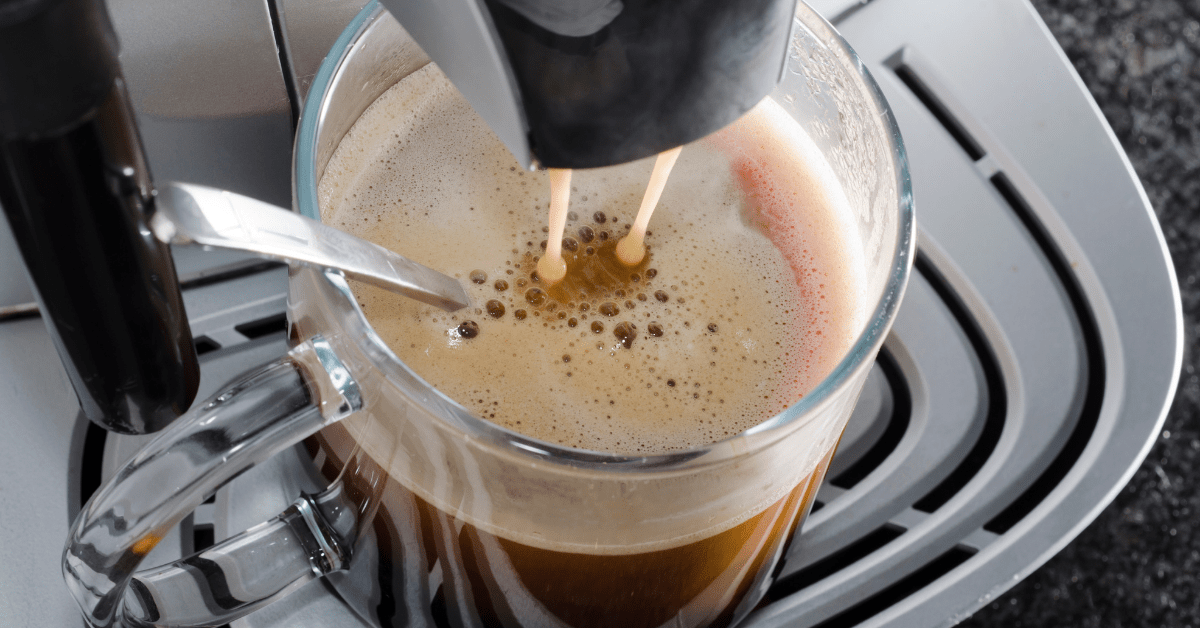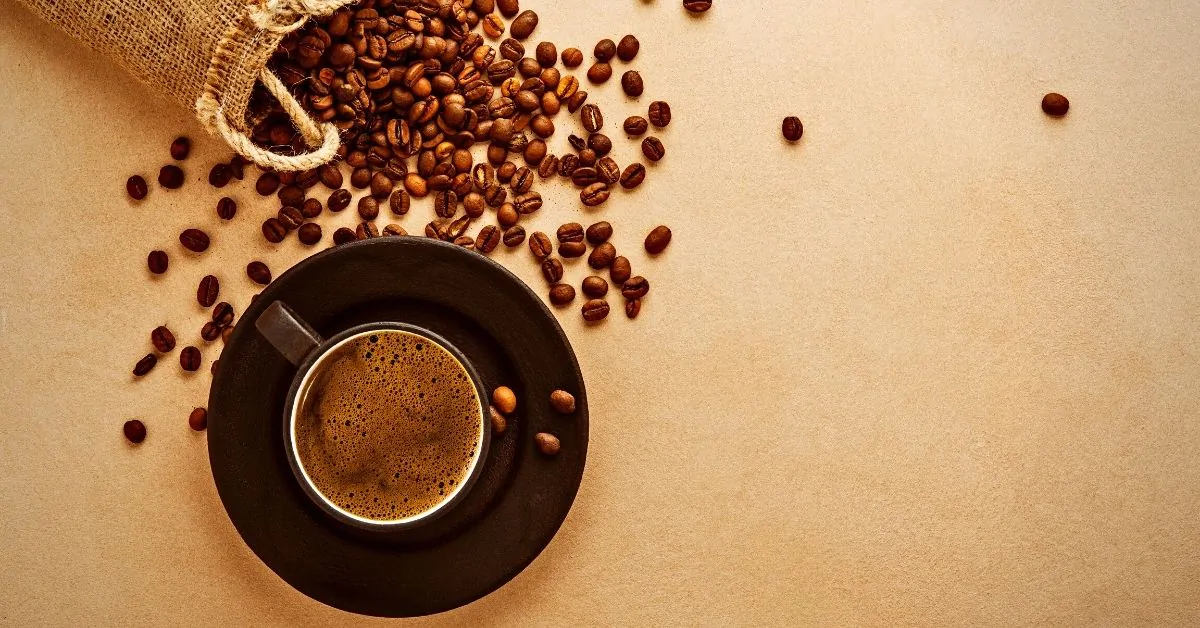Coffee from Central America is highly regarded by single-origin java fans; our guide on the best Guatemalan coffee will help you find your new favorite brew.
Among single-origin coffee enthusiasts, Guatemala is a country that comes up often in discussions.
Trust me when I say – there’s a reason why it’s loved by both coffee connoisseurs and casual drinkers. It offers such a unique flavor profile that leaves no one indifferent. You might also be interested in our guide on the world’s top coffee-producing countries.
In this article, we’ll go over everything you need to know about Guatemalan coffee, from regions and beans to the best preparation method. Let’s dive in.
The Legacy Of Coffee In Guatemala
Today, Guatemala is among the top 10 coffee-producing countries in the world. That’s especially impressive given that Guatemala’s coffee industry is not very old.
The first coffee trees were brought to this country over 300 years ago by Jesuit missionaries. However, these trees were considered ornamental at first.
The government tried to incentivize production with tax exemptions, but it wasn’t until 1860 that the coffee industry boomed in Guatemala.
Up to that point, Guatemala’s economy was mostly supported by indigo and carmine dye exports, but once artificial dye was invented, there was no need for other countries to source these dyes from overseas.
Coffee production was then amped up as a way to stabilize the economy. By 1880, coffee sales made up 90% of Guatemala’s exports.
Today, Guatemala has approximately 175,100 coffee farms, and it is currently the second most exported product. Most Guatemalan coffee is shipped to the United States, followed by Canada, Japan, Belgium, and China.
Coffee has had such a large impact on Guatemala’s economic, social, and cultural development that in 2018, the government declared coffee as part of the nation’s Intangible Cultural Heritage. Check out our Portuguese coffee explainer.
Guatemalan Coffee And Its Unique Flavor Profile
Just like how the flavor of wine depends on where the grapes were grown, environmental factors, such as soil, climate, and altitude, will influence how coffee tastes. Each region and farm worldwide has its own geographical conditions, almost like a fingerprint.
Guatemala can be divided into four geographical regions:
- Low northern plateau
- Coastal lowlands
- Central-western highlands
- Southern volcanic belt
The first two regions are situated slightly above sea level, so they’re not suitable for growing coffee. The last two provide ideal conditions. All Guatemalan coffee-growing districts are situated above 4,000 feet and have distinct dry and wet seasons.
Higher elevations mean slower bean development. As a result, the coffee is sweeter and more complex.
Another factor that influences the flavor profile is soil. Two regions, Huehuetenango and Coban, are covered with limestone soil. This type of terrain provides perfect drainage for the abundant rainfall. The ground is also rich in magnesium and calcium, which helps the crops grow.
The other regions consist of volcanic soil, which is as nutritious as it gets.
You can definitely detect the difference in regions in your cup, but there are certain tasting notes specific to Guatemalan coffee in general.
Guatemalan java has a bright acidity, a rich body, and a subtle chocolate tone. Depending on the region, other notes can range from nutty to fruity and winey.
Among Central American coffee, Guatemalan java has probably the most complex flavor profile.
Guatemalan coffee is similar to coffee coming from Costa Rica. Both are bright and round. However, Costa Rican coffee is more floral.
It also shares a similar body to Nicaraguan coffee, followed by balanced sweetness and a nutty tone. Guatemalan coffee is a tad more acidic than Nicaraguan.
Honduran coffee also has many similarities, which is no surprise given their geographical factors. Both have prominent notes of nuts and chocolate, although Honduran coffee has a less complex flavor profile overall.
Notable Guatemalan Coffee Regions
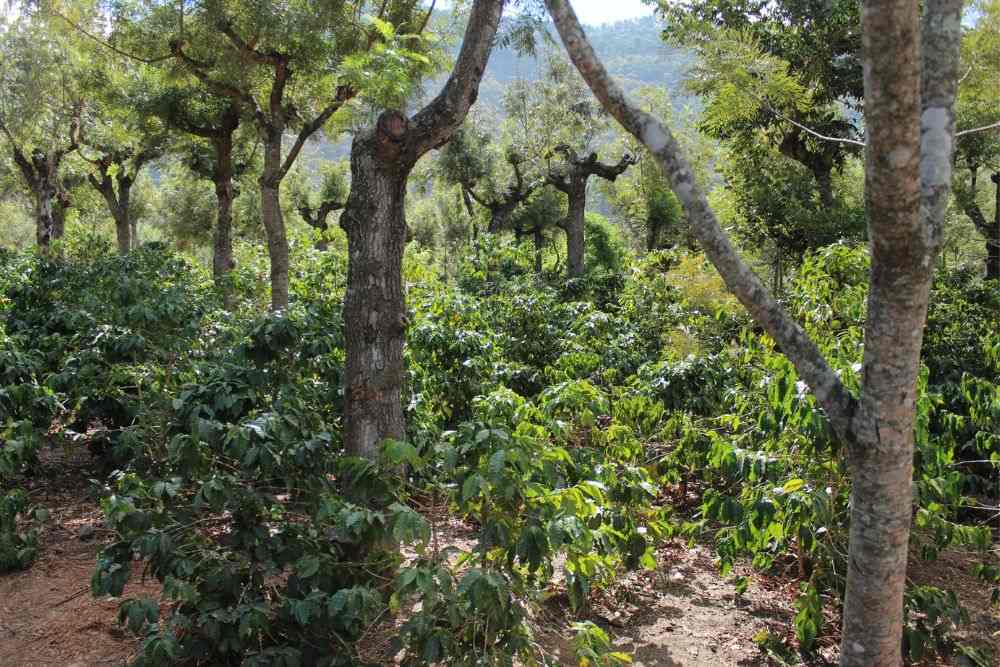
Although there are different topographical features within Guatemala, the country is mostly mountainous.
Guatemala has eight coffee regions, all of which are situated in the mountains. Still, each of these regions has its unique microclimate. Microclimate is a local set of atmospheric conditions, including:
- Moisture
- Temperature
- Air pressure
- Soil
- Vegetation
So, even if two regions are in close proximity to one another, the difference in any of these factors affects growing conditions.
Antigua
Antigua is arguably the most well-known coffee-growing region in Guatemala. It’s situated at an altitude of 4,900 to 5,500 feet above sea level, surrounded by three volcanoes.
One of them, Fuego, is still active, with gas and ash eruptions occurring every 15 to 20 minutes. It constantly enriches the soil with minerals.
The coffee shrubs are shaded by the dense rainforest. This, along with the high altitude, slows down the growth and influences the development of a more complex flavor profile. It’s heavier than your typical Guatemalan coffee, with subtle spicy, smokey notes.
Acatenango Valley
Acatenango Valley lies just west of Antigua, also in the proximity of the Fuego volcano. The geographical conditions are pretty similar, except the Acatenango Valley is at a slightly higher altitude of up to 6,500 feet.
For years, coffee from this region was sold as Guatemala Antigua coffee, given the similarity in flavor. Both are very balanced and rich, but coffee from Acatenango is slightly more acidic due to the different altitudes.
Atitlan
The Atitlan Lake occupies the crater formed by a supervolcanic eruption 84,000 years ago. It’s also surrounded by three other volcanoes, which enrich the soil with minerals.
In this region, the coffee is grown on the slopes surrounding the lake at an altitude of 5,000 to 5,600 feet. Up here, the main factor that influences the microclimate is the weather phenomenon named Xocomil.
There are many legends speaking of the phenomenon, but when it comes to understanding the coffee climate, all you need to know is Xocomil is a strong afternoon wind that cools the air.
Atitlan coffee is known for its full body, citrus acidity, and lingering aroma.
Fraijanes Plateau
Guatemala has a lot of active volcanoes, and the most active one, Pacaya volcano, can be found in this region.
The Fraijanes Plateau has an elevation of between 4,500 and 6,000 feet above sea level and somewhat cooler temperatures than other regions. It also has heavier rainfall during the wet season and plenty of sun during the dry season.
Coffee from this region has a rather balanced flavor profile. Its bright and persistent acidity is accompanied by hints of chocolate and caramel, with a lingering sweetness.
Huehuetenango
One of the two non-volcanic regions, Huehuetenango, is located in the highland regions of northern Guatemala. With an elevation between 5,000 and 6,500 feet above sea level, Huehuetenango is among the highest coffee-growing sectors in the country.
It’s also the driest one due to the warm winds blowing from Mexico’s Tehuantepec plain. However, the soil remains well saturated due to plenty of rivers and streams passing through the area.
The coffee coming from this region has an intense acidity, but it by no means overwhelms the flavor profile, which is fruity and sweet, with pleasant wine notes.
Nuevo Oriente
Nuevo Oriente is one of the smallest but fastest-growing coffee regions in Guatemala. Located on a former volcanic range near the border with Honduras, this district sits at an elevation between 4,300 and 5,600 feet above sea level.
This area gets less rainfall compared to other places in Guatemala, but it is still more than most regions in the world. The three most commonly grown varietals are Bourbon, Caturra, and Catuai, all of which are shade-grown.
Coffee from this region is somewhat less acidic than other Guatemalan crops, but at the same time, it shares that chocolate notes most coffee from this country has. It’s full-bodied, with a heavy nutty flavor and a slight berry aftertaste.
Coban
Coban is located in the north, deep into the rainforest of Guatemala. In fact, the name of the region translates to “place of clouds” in the Qʼeqchiʼ language. The weather in this region is mostly murky, with only a few hours of sunlight each day.
Without a pronounced dry season, coffee in this region tends to develop a deeper flavor profile. It has a full body, light acidity, and strong fragrance. You can also notice a slight winey aftertaste.
San Marcos
With an average precipitation reaching up to 200 inches, this is the wettest region in Guatemala. However, it’s also the warmest one, with temperatures fluctuating between 70 and 81ºF.
Unlike coffee from other regions, which is dried in the sun, San Marcos coffee is processed with the help of a drum machine.
A lot of Arabica varietals are grown in this area, including Bourbon, Caturra, and Catuai coffee beans. Regardless of the varietal, you can expect the coffee from this region to be smooth and floral, with notes of citrus and caramel.
Best Guatemalan Coffee Beans
With so many coffee producers in Guatemala making high-quality coffee, let’s explore the beans that are considered crème de la crème.
Geisha
Geisha is a relatively new crop in Guatemala, brought in from Ethiopia. Lifeboost Nueva Granada Geisha is a good example.
For the most part, Geisha is grown in San Marcos and Antigua, so the main flavor profile will be influenced by the microclimate.
However, there are certain inherent nuances, like the honeysuckle sweetness and a jasmine aroma. Other common notes include bergamot hibiscus, tropical fruits, and cherry blossom.
While Geisha can be very crisp, the Guatemalan varietal tends to be lower in acidity.
Guatemala Peaberry
Peaberry is one of the most popular Guatemalan beans, making up about 5% of all the beans farmed in the country.
A peaberry is a mutation of the coffee bean. While a normal cherry contains two coffee beans flat against each other, a peaberry cherry has a single, round bean.
Peaberry beans receive all the nutrients, which makes them sweeter and richer in flavor.
Since peaberry coffee can be found across all varietals, the exact flavor profile depends on the region it was grown in.
Even though there’s a high demand for this type of coffee, you won’t be able to find it in just any coffee shop. Only specific specialty coffee roasters offer peaberry coffee, like Volcanica Coffee.
Guatemala Antigua
As we already established, Antigua is probably the best-known coffee-growing region in Guatemala.
Grown at an altitude above 4,600 feet, it’s categorized as Strictly Hard Bean coffee. This title is commonly used among Central American nations to denote coffee grown at high elevations.
Caturra and Bourbon are the two most commonly grown varietals in this region. So when you see coffee labeled with the name of this region, it’s probably a blend of the two. Learn more in our explainer on the types of coffee.
The label will probably also say “single-origin,” and that’s not a mistake. This is a broad term indicating coffee sourced from a single producer, crop, or region in the same country.
So, any coffee coming from Antigua will be single-origin, regardless of the varietal. They’ll all share the same characteristics, including a rich body, velvety mouthfeel, and a hint of spice.
Red Bourbon
Red Bourbon is a popular varietal in Guatemala, with many regions growing this particular bean.
Generally, Bourbon coffee is known for its medium body, low acidity, and notes of butter and nuts. It’s sweeter and smoother compared to other varietals grown in the country. When first getting into Guatemalan coffee, most people find this varietal the most approachable.
It also has some fruitiness, mainly influenced by the microclimate the crop grows in. In any case, medium-roasted Red Bourbon allows all the flavor notes to come to light without intense fruitiness masking them.
Guatemala El Catuai
The Catuai varietal shines in high altitudes and volcanic soil, so it’s ideal for growing in Guatemala. Many farms across the highlands are focused on growing this high-yielding varietal.
Catuai has that classic Guatemala coffee flavor profile. It has bright crispness, followed by chocolate and toffee notes. You’ll normally find it blended with coffee from other regions, but some brands have single-origin Catuai coffee.
Pacamara
Pacamara is a hybrid of two varietals, both also being a mutation:
- Pacas (a Bourbon mutation)
- Maragogype (a Typica mutation)
As a hybrid, it gets the best of both worlds. The plant is small, like Pacas, but it yields large beans, like Maraagogype. The result – a higher yield from a smaller area.
The high demand for this coffee is no surprise, given the sweet flavor profile accompanied by notes of dark chocolate and raisin. It’s quite a complex coffee, with bright acidity and a smooth finish.
Even though it’s so well-loved, Pacamara isn’t often seen on the grocery store racks. Instead, only a handful of specialty coffee roasters offer it.
Brewing The Ideal Cup Of Guatemalan Coffee
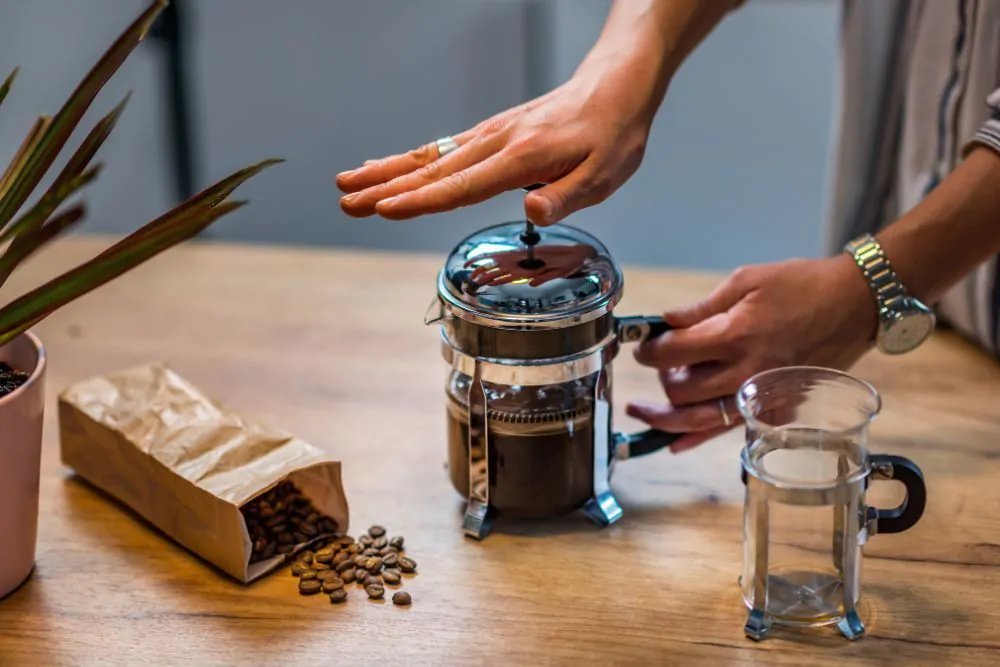
The acidity and body of Guatemalan coffee work well with a variety of brewing methods. However, full immersion will bring out the sweetness to balance the flavor profile.
Arguably, the good ol’ French Press is the best way to brew a perfect cup of Guatemalan coffee.
Materials Needed:
- French press brewer
- Timer
- Scale
- Grinder
- Spatula
- Eight grams of coffee
- 6.7 ounces of off-the-boil hot water
Ideally, you should grind the beans right before brewing, but if you don’t own a grinder, you can buy pre-ground coffee instead. Just make sure to use a fresh batch, as coffee starts losing intensity the second it’s ground.
Remember that French press coffee should be coarse. You might find our guide on the best coffee grinder for French press helpful.
Method:
- Warm up your empty French press by rinsing it with boiled water. This step is to ensure the brewer remains hot throughout the process for optimal extraction.
- Discard the water.
- Add your coffee to the French press, then pour in half the hot water. Start the timer while doing this.
- At around the first minute, take a spatula and stir coffee several times to break the crust forming on the top.
- Fill the French press with the rest of the water. Put the top on without pressing it down.
- Wait four minutes before pressing down the plunger, then serve.
Final Thoughts On Guatemalan Coffee
Guatemalan coffee is one of the best coffees in the world. It has a complex but very approachable flavor profile, which appeals to both casual drinkers and coffee aficionados.
There’s a good range of coffees to choose from, so you’ll never get bored. With so much variety, you can find a flavor profile that best suits your tastes.
So, which Guatemalan coffee beans do you like the most?
References
- “Caffeine and Capitalism: a Brief History of Guatemalan Coffee.” The Institue For Global Leadership. Retrieved July 13, 2023. http://tiglarchives.org.s3.amazonaws.com/programs/build/build-guatemala/caffeine-and-capitalism-a-brief-history-guatemalan-coffee.html
- “Coffee in Guatemala.“ The Observatory Of Economic Complexity. Retrieved July 13, 2023. https://oec.world/en/profile/bilateral-product/coffee/reporter/gtm#:~:text=About&text=Exports%20In%202021%2C%20Guatemala%20exported,most%20exported%20product%20in%20Guatemala.
- “Guatemala Geography.” Country Reports. Retrieved July 13, 2023. https://www.countryreports.org/country/Guatemala/geography.htm#:~:text=The%20country%20is%20roughly%20divided,within%20view%20of%20the%20city.

